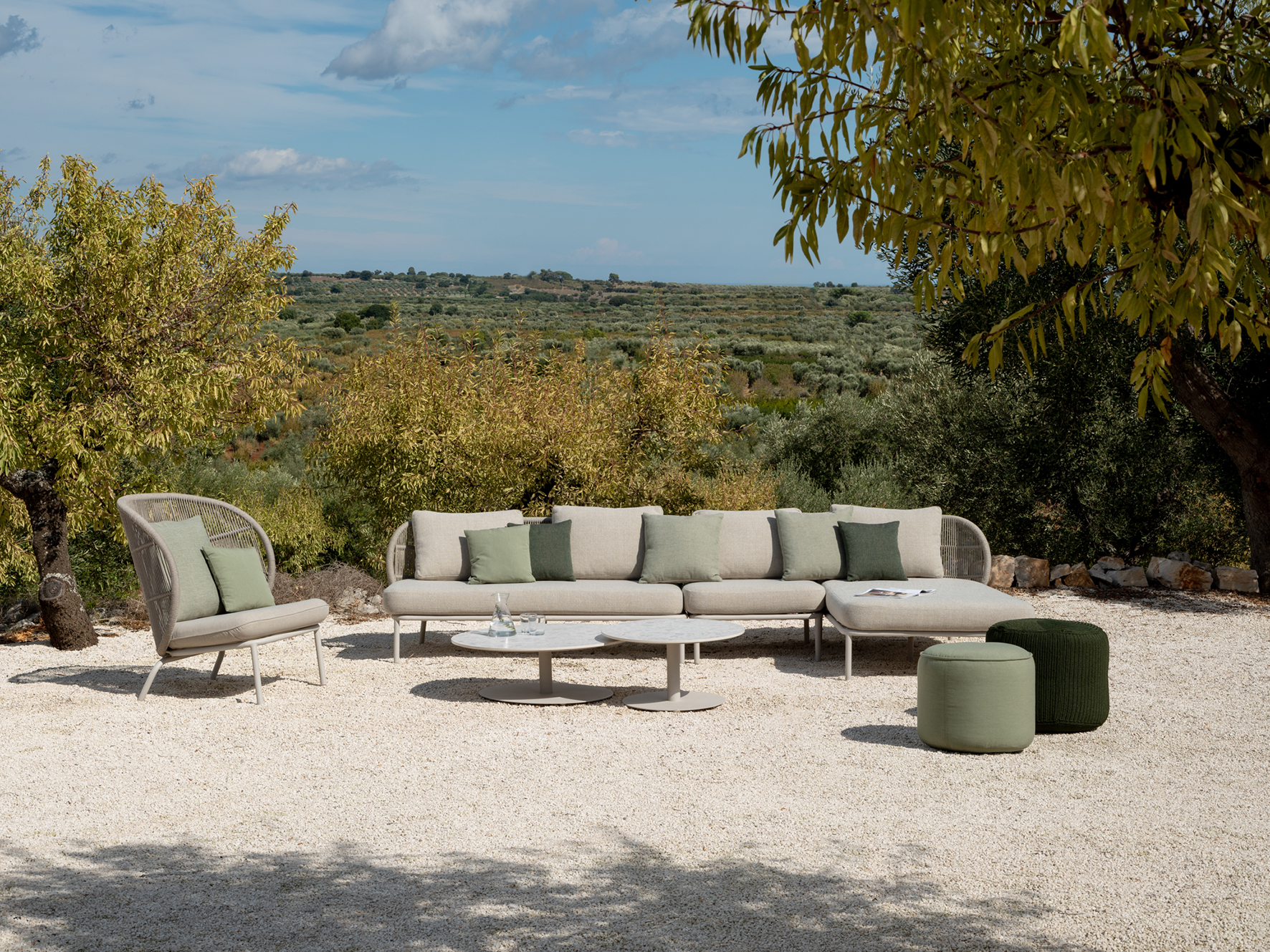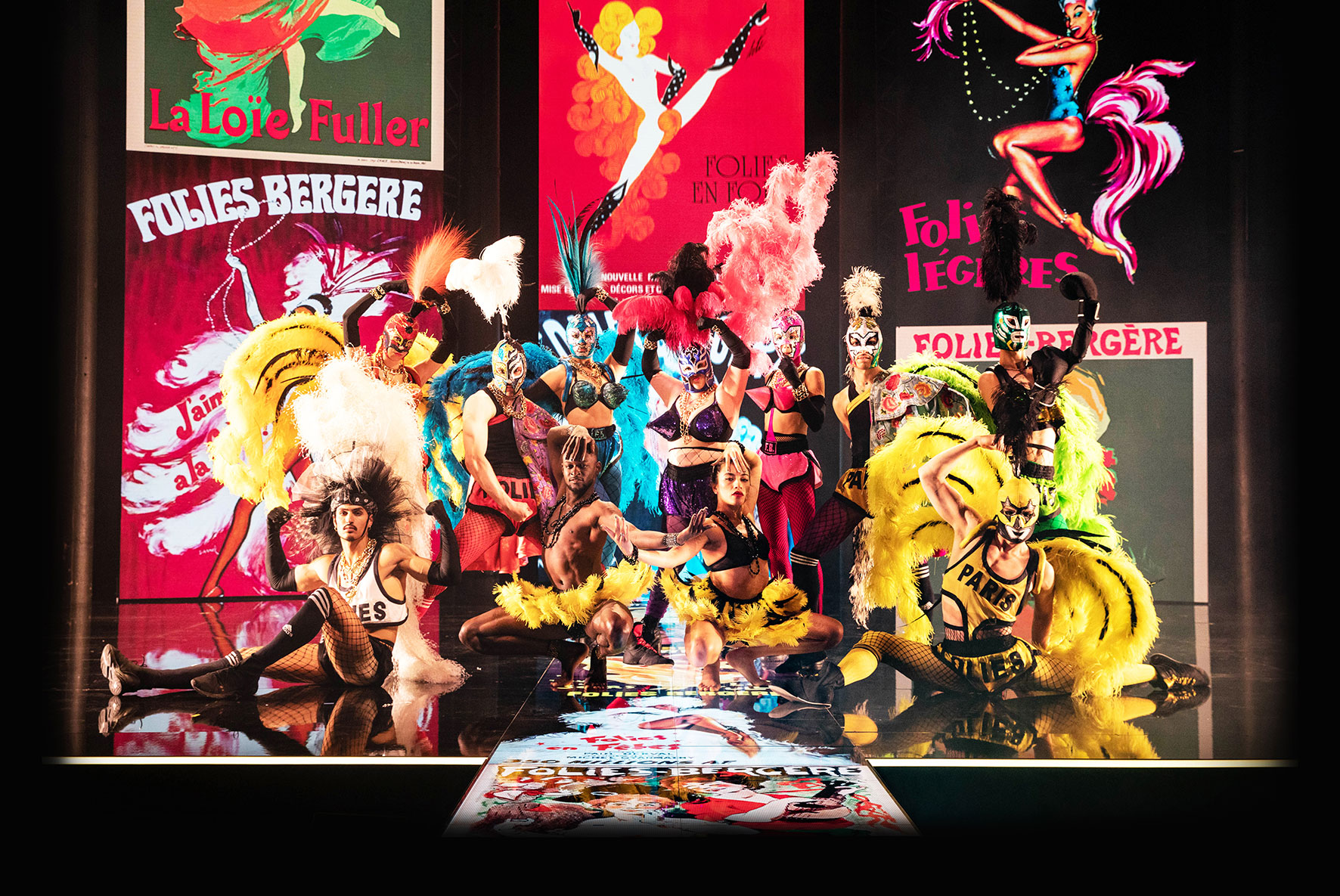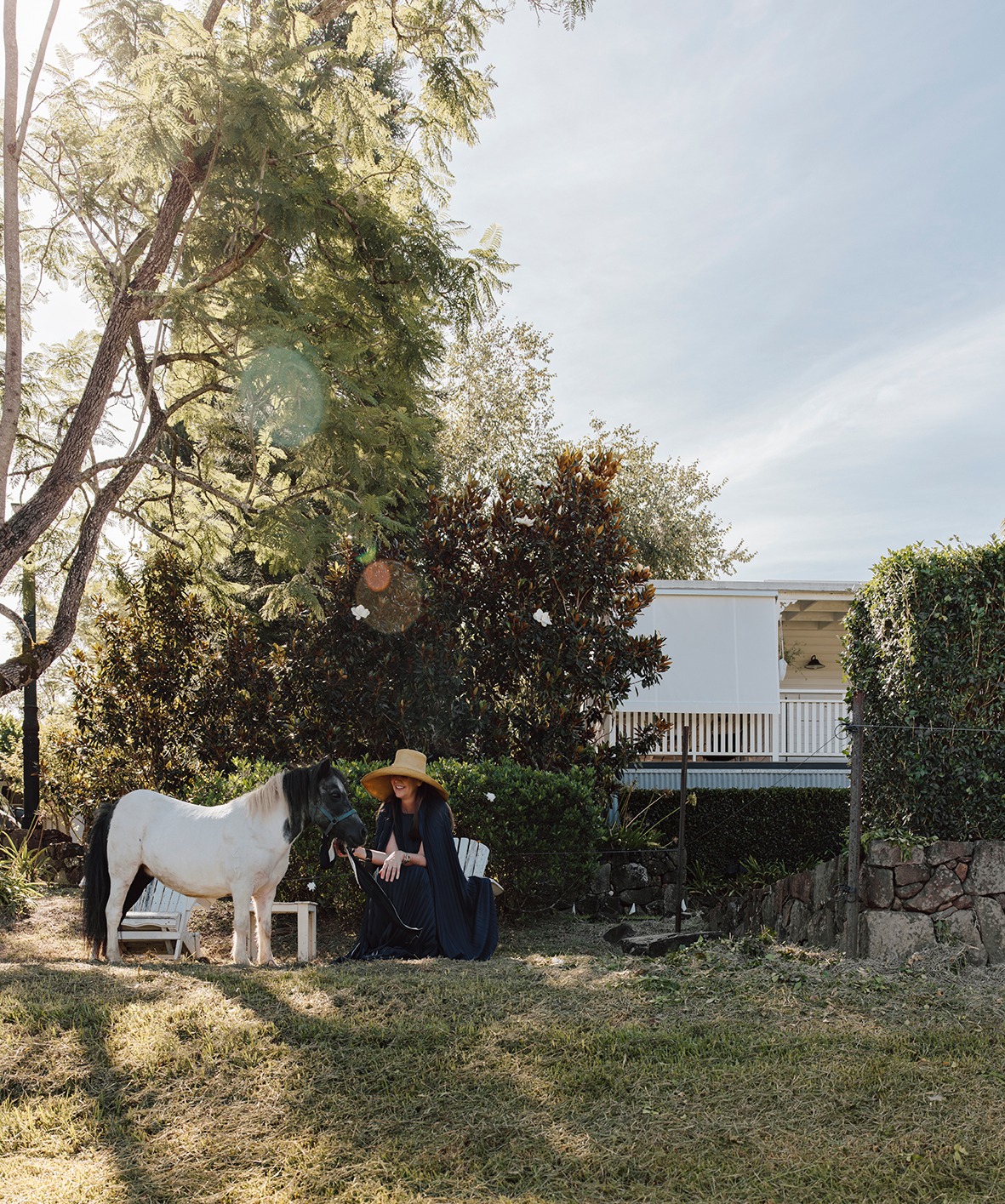Carefully considered and evolved over time, this extraordinary architectural home in South Africa’s Wilderness is both inspiring work headquarters for its design-loving owners, and happy hideaway for their family of seven.
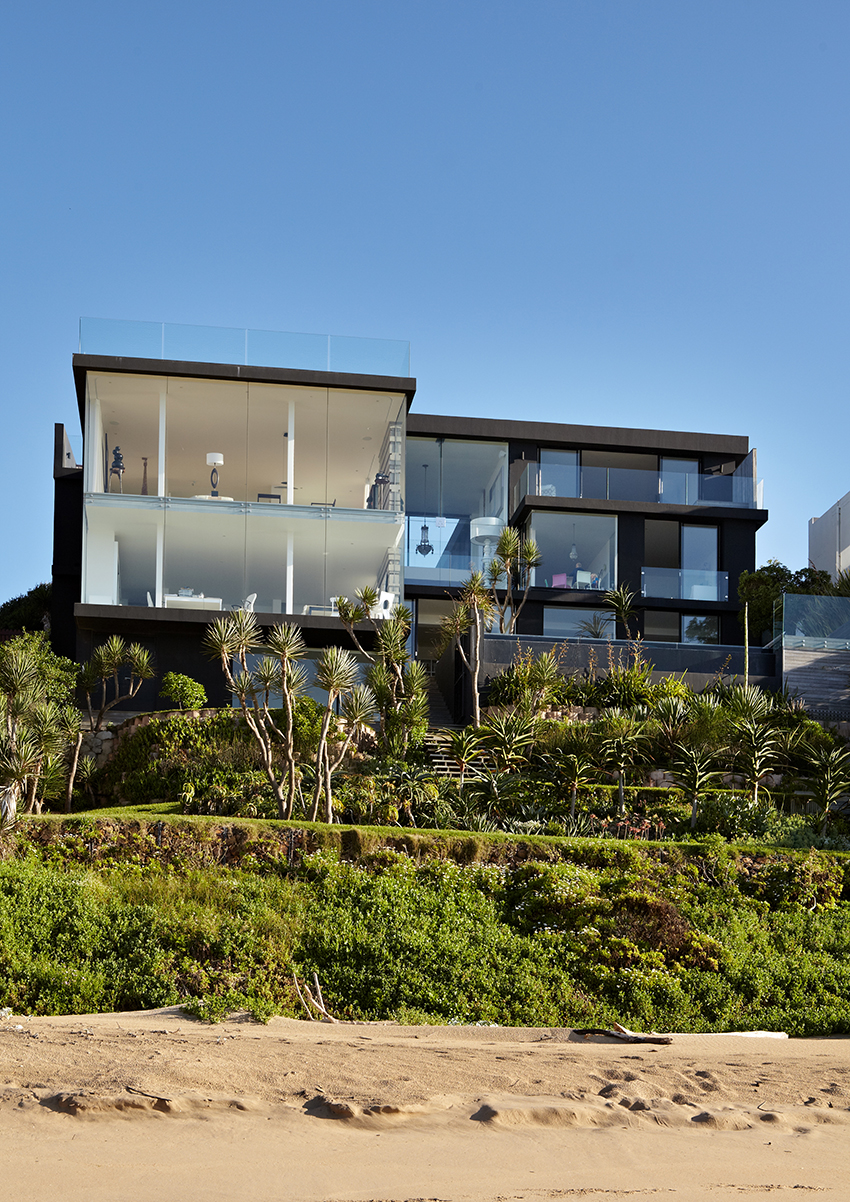
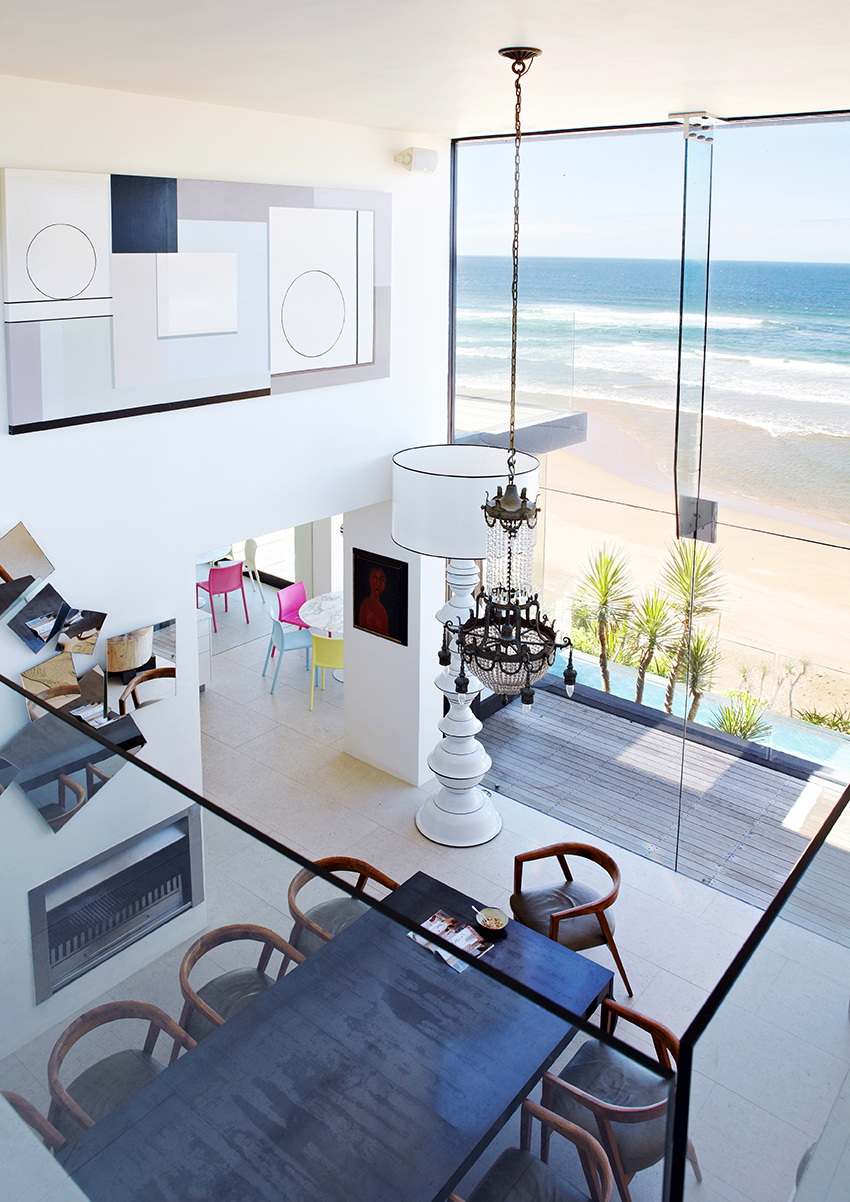
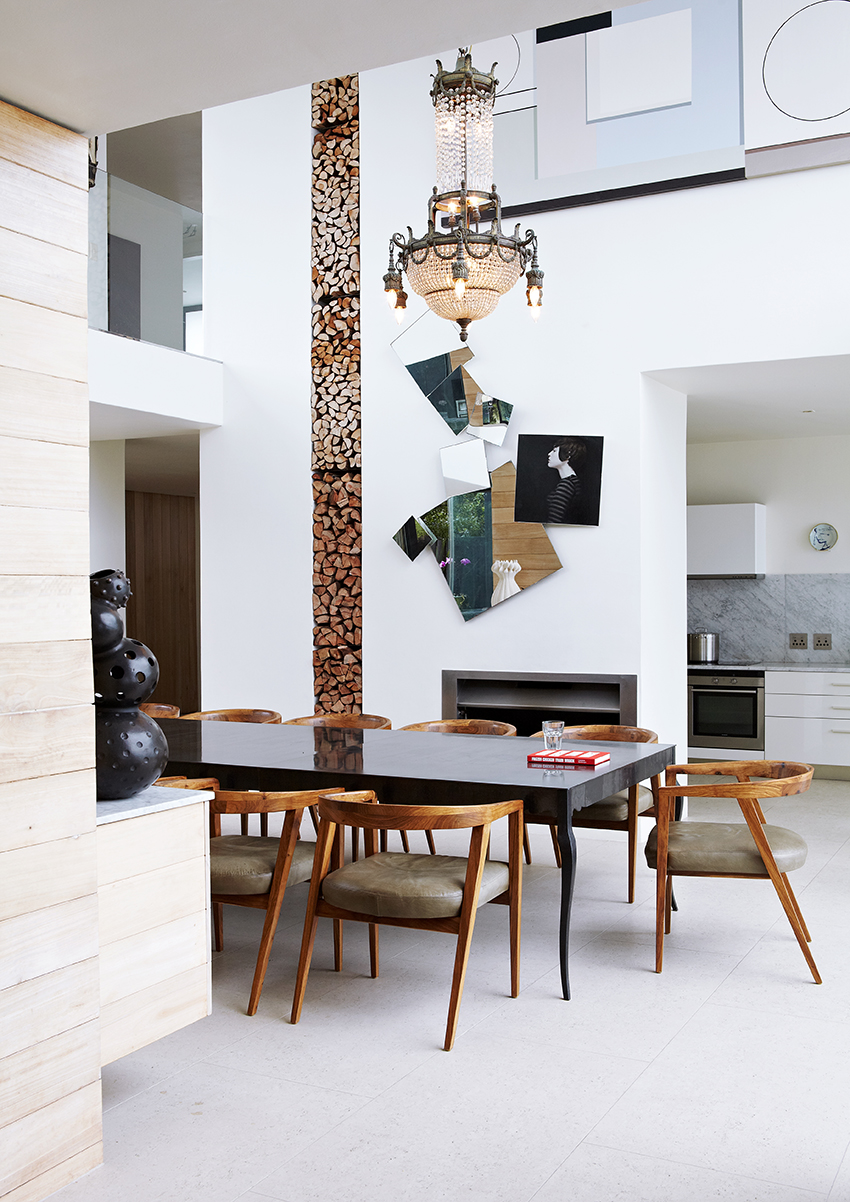
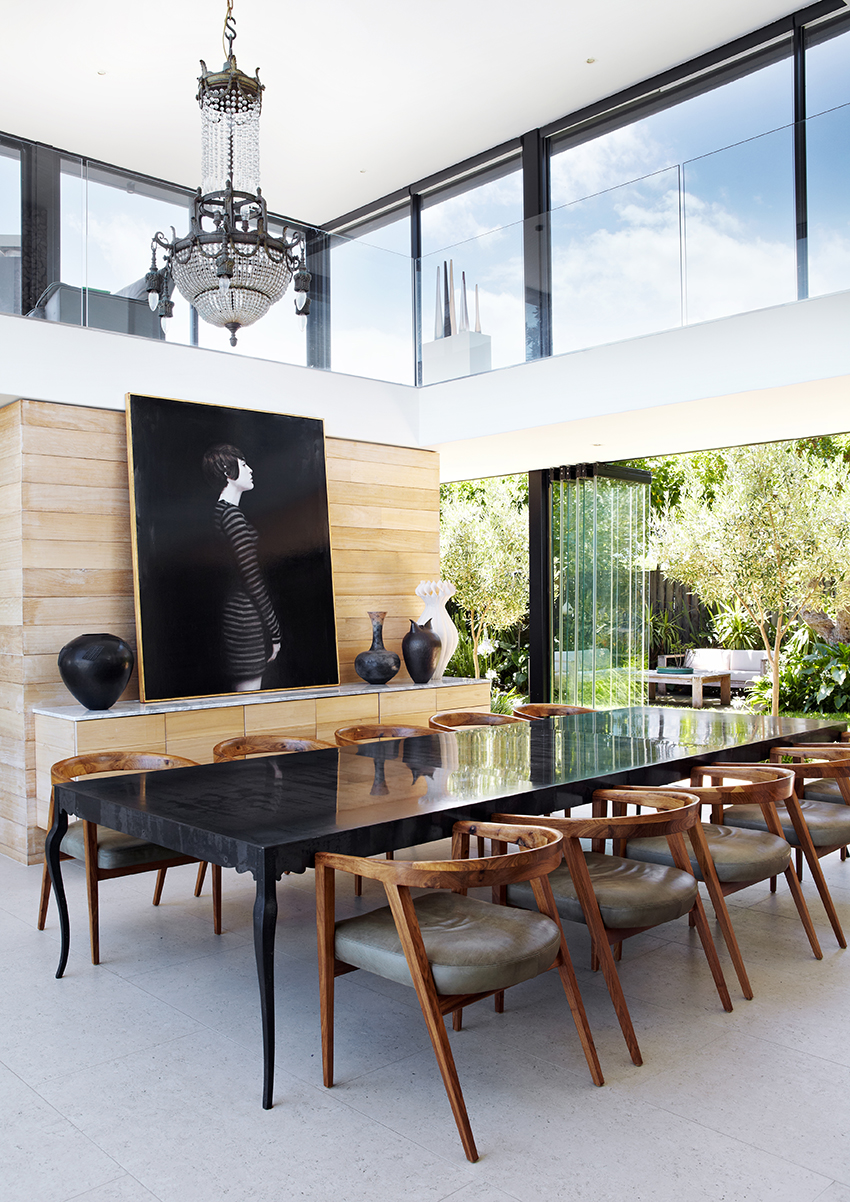
On any given weekend, ‘Black House’ (a name that has stuck since Trevyn and Julian McGowan chose the distinctive dark shade for their home’s exterior) literally teems with young people. The McGowan’s energetic brood numbers five, ranging in ages from three to 19. “But there are always a lot of other kids too,” says Trevyn. “Most of ours bring a few friends to stay, so over weekends we generally have between 10 and 14 kids at a time. They move through the house like shoals of fish,” she quips. Trevyn’s description is apt.
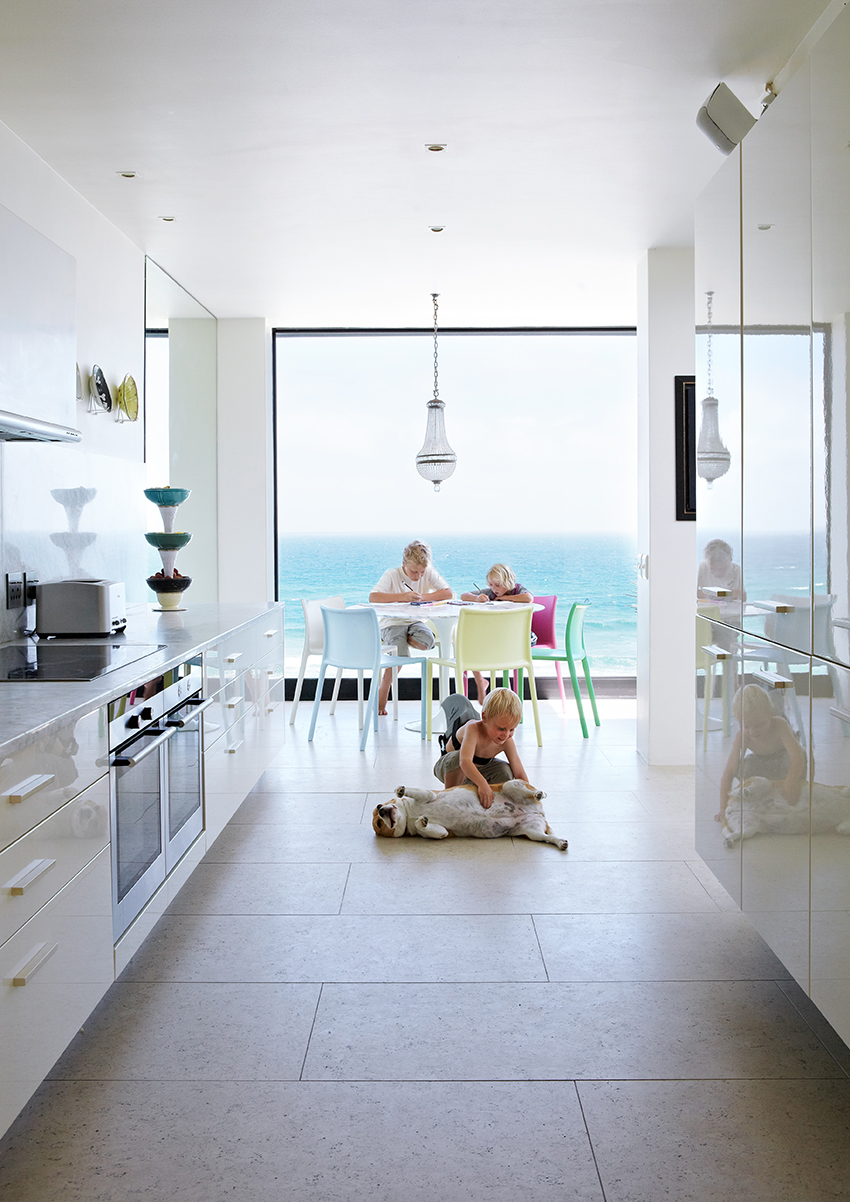
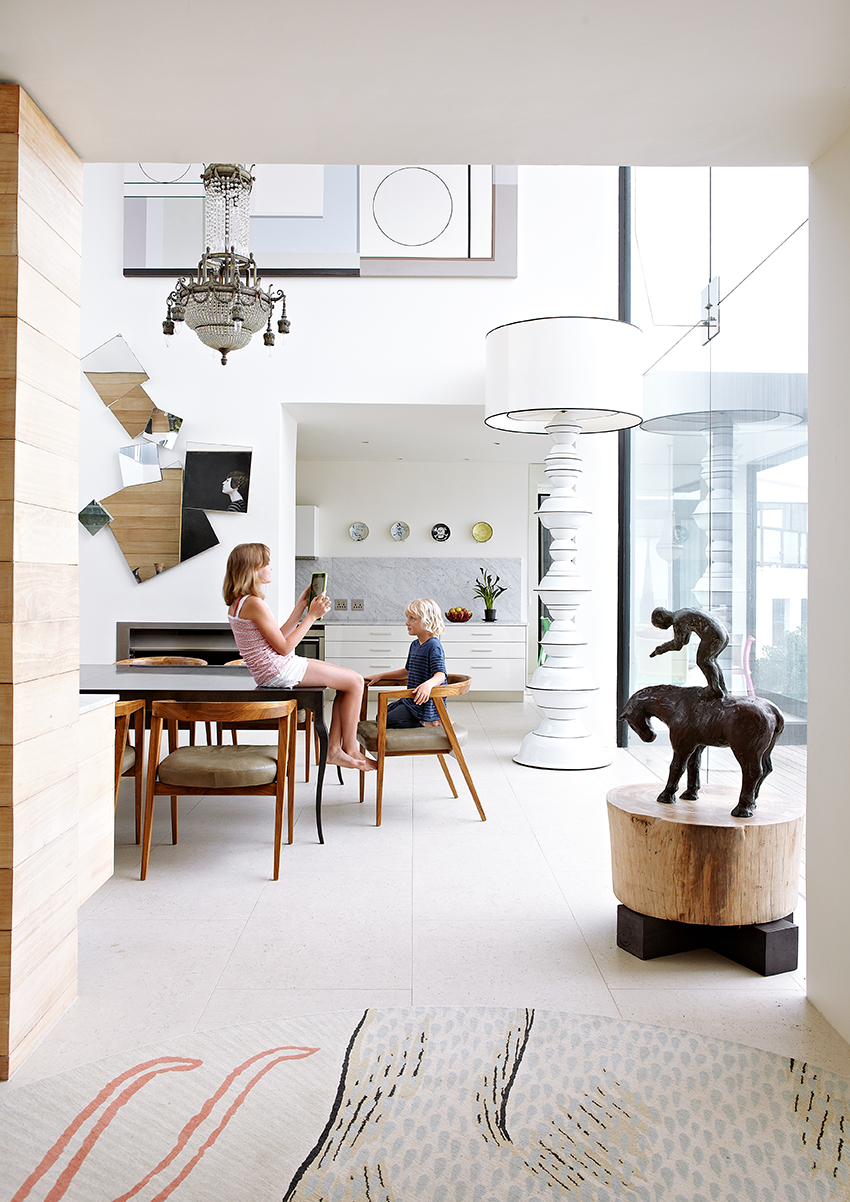
With its floor-to-ceiling foldaway glass ‘walls’ and double volume spaces, the McGowan’s have designed their home to merge seamlessly with the ocean. Set high up on a dune, it overlooks 20 kilometres of pristine white beach and a sparkling expanse of sea that dissolves softly into sky at the horizon line. The overall effect is one of transcendent space, light and water – evoking a feeling of being part of, rather than spectator to, the incredible scenery. Although undoubtedly a showstopper – owing to its refi ned architectural form, generous scale and unique position – this is, first and foremost, a family home.
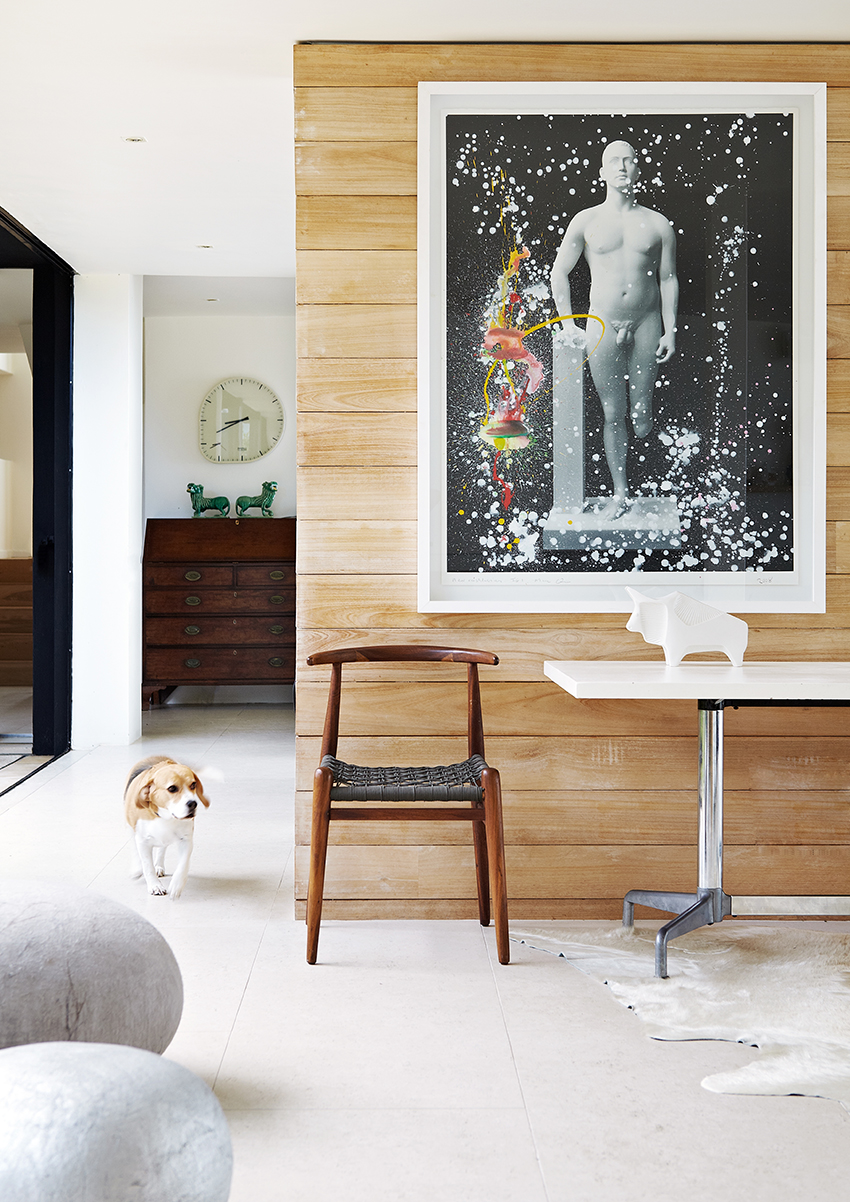
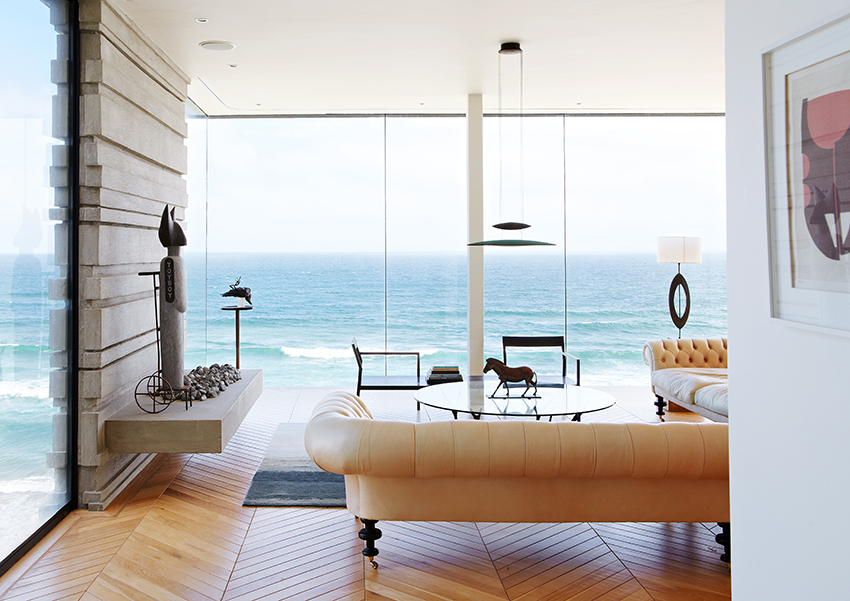
Trevyn and Julian bought the original thatched cottage on the spur of the moment in 2003, during a weekend tour of the Garden Route. At the time, the couple had been living and working in London for 22 years, and were on their annual South African holiday with their three young children. Raised in Johannesburg, Trevyn relocated to train as an actress in London, where she met and married British-born theatre designer Julian McGowan and ran an interior design and architectural firm, Site Specific. Creating bespoke spaces for discerning thespian friends like Clive Owen, Gerard Butler, Rachel Weisz and Sir Ian McKellen, Trevyn incorporated South African design pieces to many of her projects – one way of staying connected to her roots.
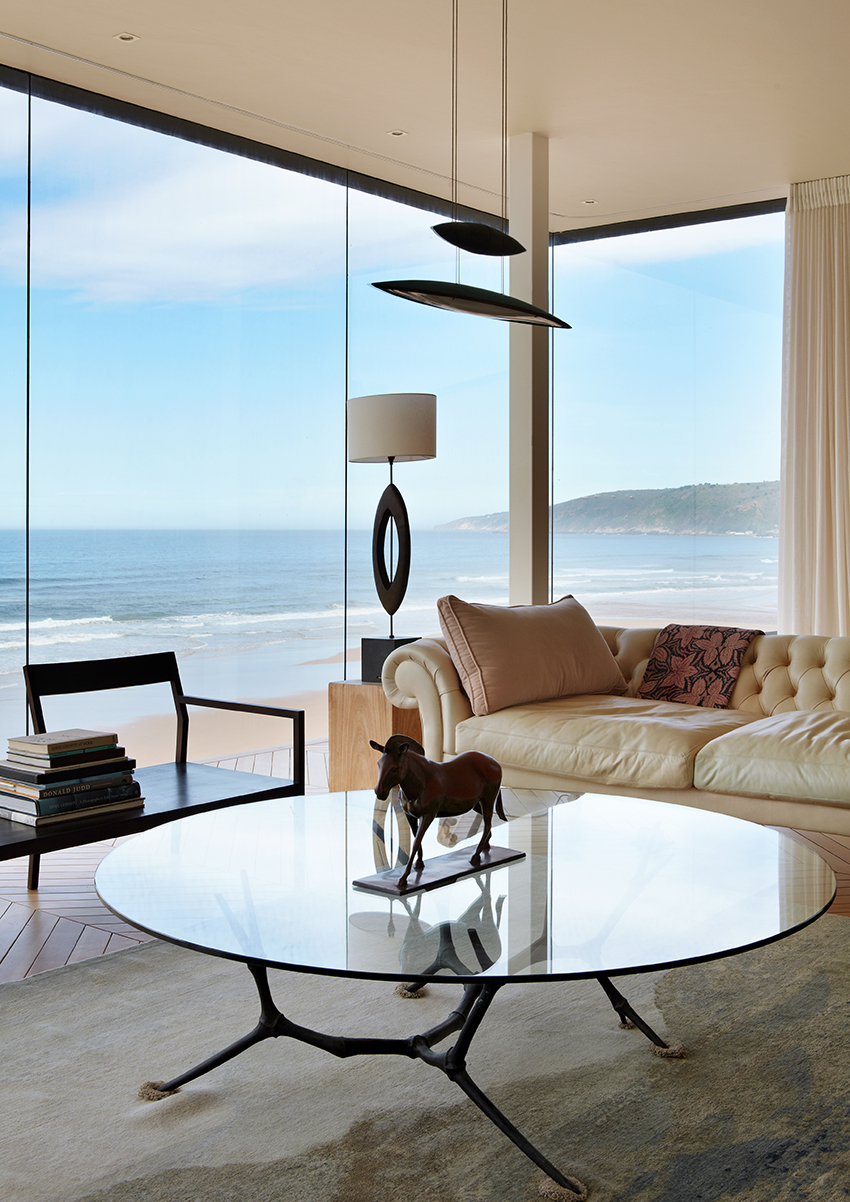
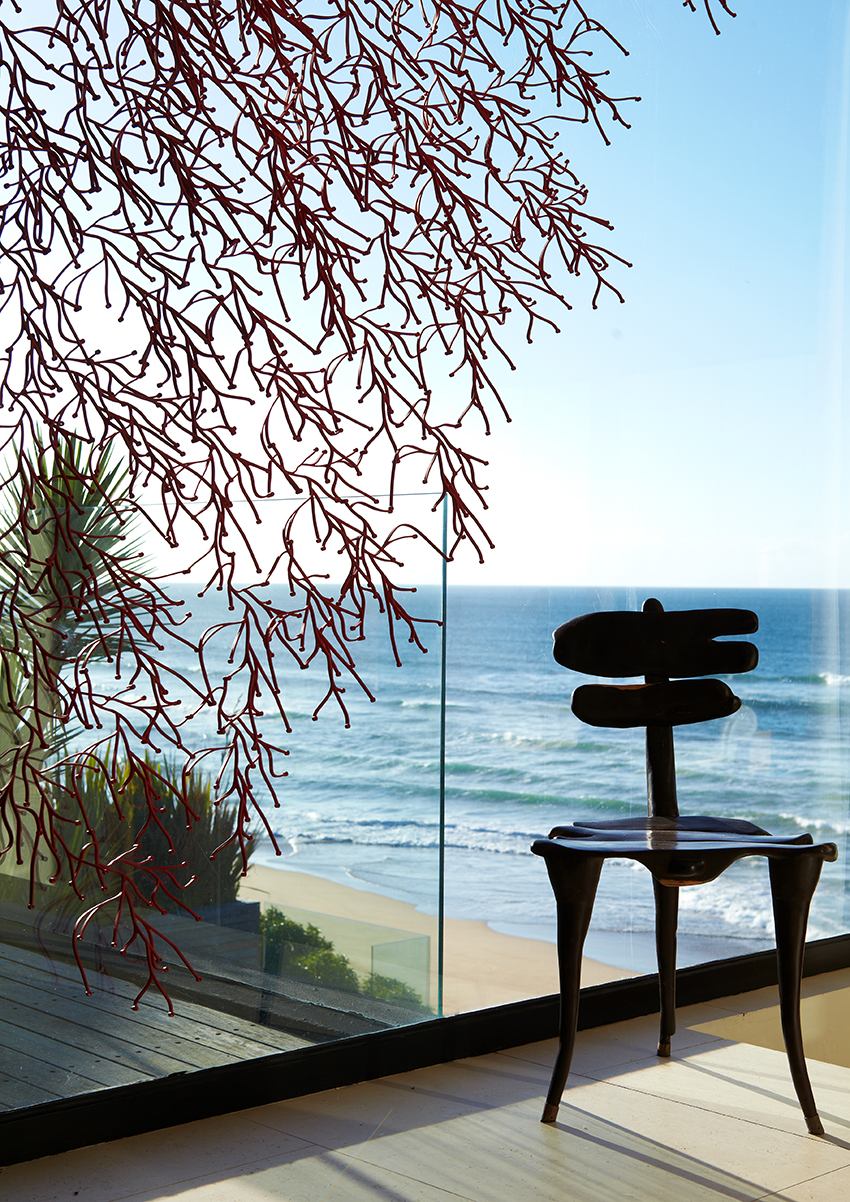
The McGowan’s have described their decision to trade the creative buzz of London’s burgeoning East End for a seemingly remote National Parks’ village as ‘crazily spontaneous’. On reflection, however, their decision was underpinned by a deep desire to raise their children the old fashioned way: spending quality time together at home, in a body- and soul-enriching environment, without the distractions of the city. In its current form, Black House has been a decade in the making. Initial renovations began in 2005, after the couple had wound up their affairs in London and dedicated time to understanding the full potential of their new property.
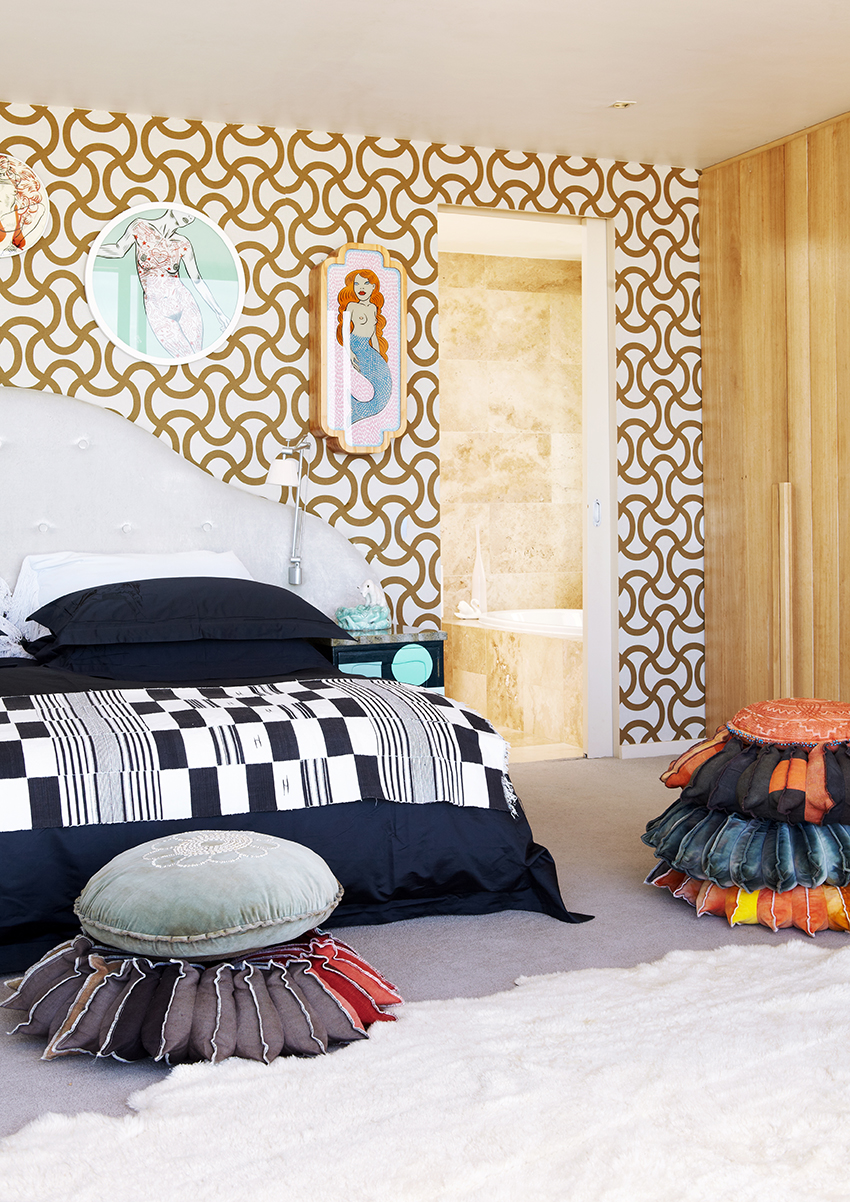
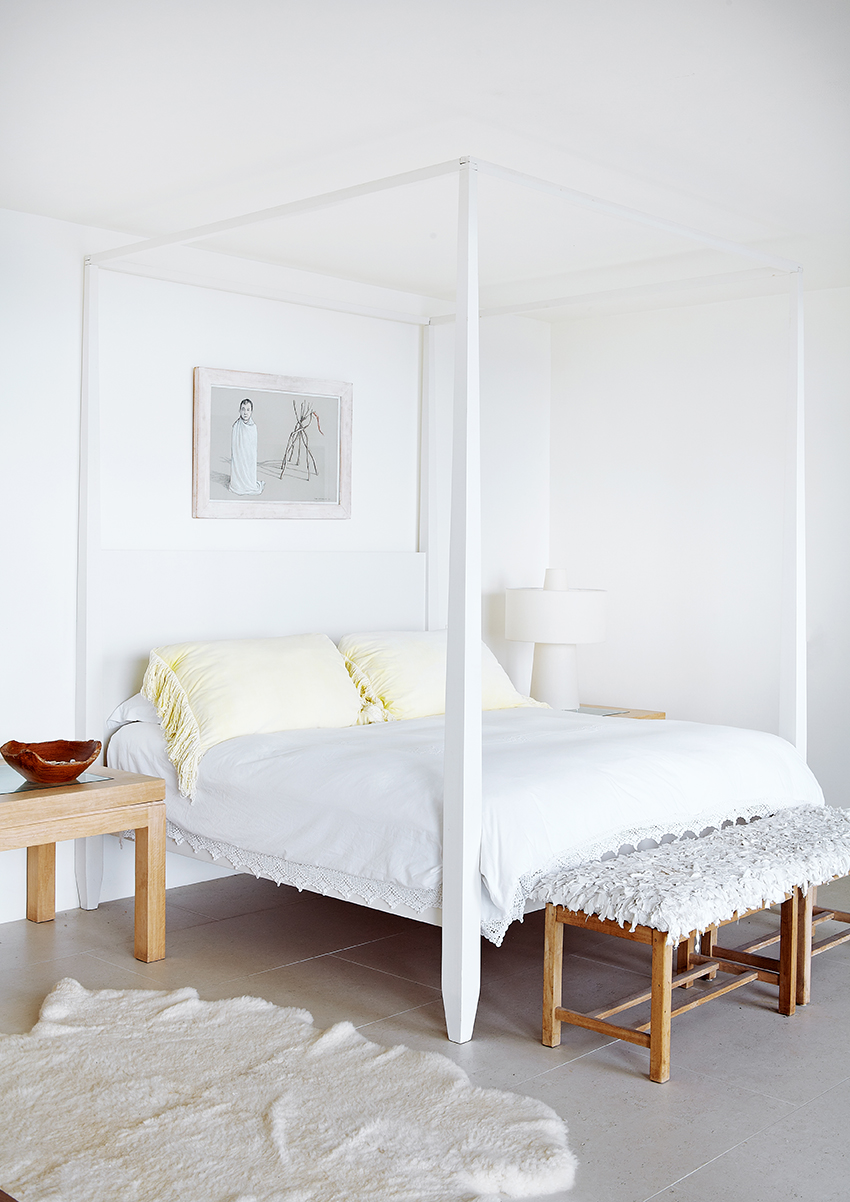
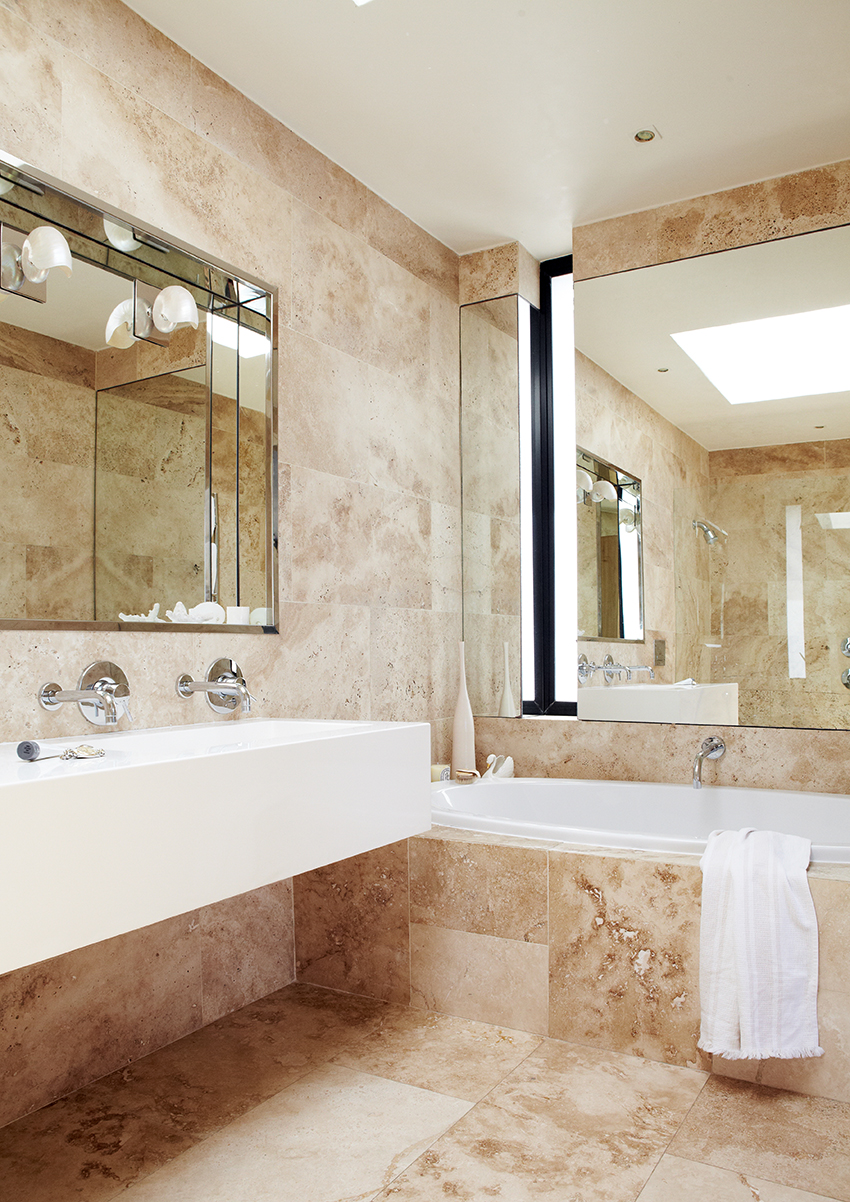
Just 4.5 hours’ drive from Cape Town, Wilderness is unique in that it offers spectacular views over the ocean as well as lush, green vistas towards the headland, which is threaded by a lagoon and framed by dramatic mountains. Like most of the properties along this strip of coast, the house has a south-facing outlook towards the sea. “It’s great because we can enjoy stunning sunsets without the direct glare,” says Trevyn. The north-facing benefits are, however, to the rear of the house. Unlike many of its neighbours, Black House does not turn its back on the mountains. “Staying in the original cottage, we realised how much of the light and warmth came from the rear,” recalls Trevyn, “and so we opened the house up to the back, and created the garden, which has a really sunny aspect. We also kept the house high on the site, to maximise the back light.”
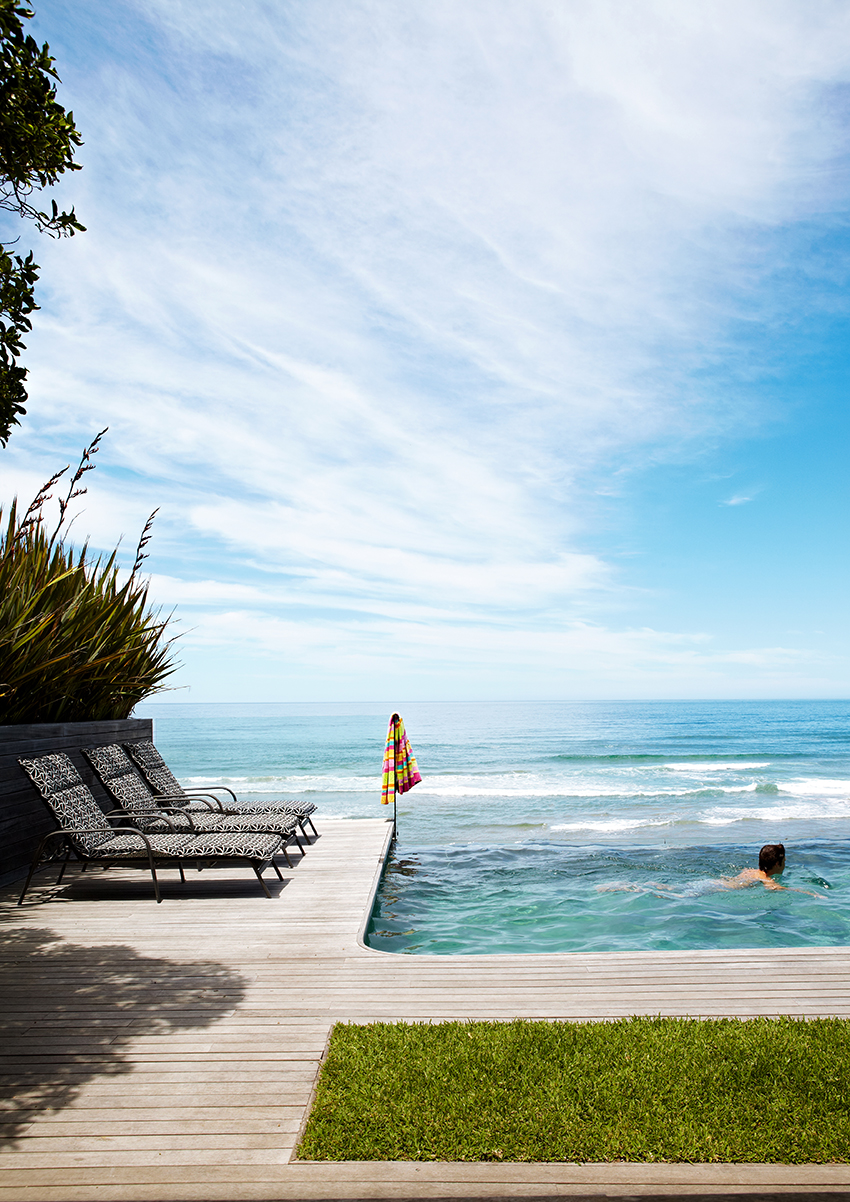
With their steadily growing family and rapidly expanding global design businesses, the McGowans embarked on a second, even more ambitious, renovation in 2011. Lasting almost a year, it saw the addition of a three-storey glass ‘tower’ and roof garden on the Western side of the house – projected out towards the sea – and a rim-fl ow pool deck that has become a focal point and family hangout. The top level of the new wing accommodates a dramatic living room that offers the experience of being on a ship, while the middle floor houses an expansive, bright office space that opens out onto the pool deck. Lower down on the slope of the dune than the original foundation line, and nestled in the newly landscaped indigenous garden, the ground level space is a combined gym and en-suite guest bedroom, looking directly into the tumbling surf. In contrast, the roof garden towers over the ocean, boasting truly jaw-dropping views, a Jacuzzi and open fireplace. It has become a favoured spot for everything from sunbathing and sundowners, to studying.
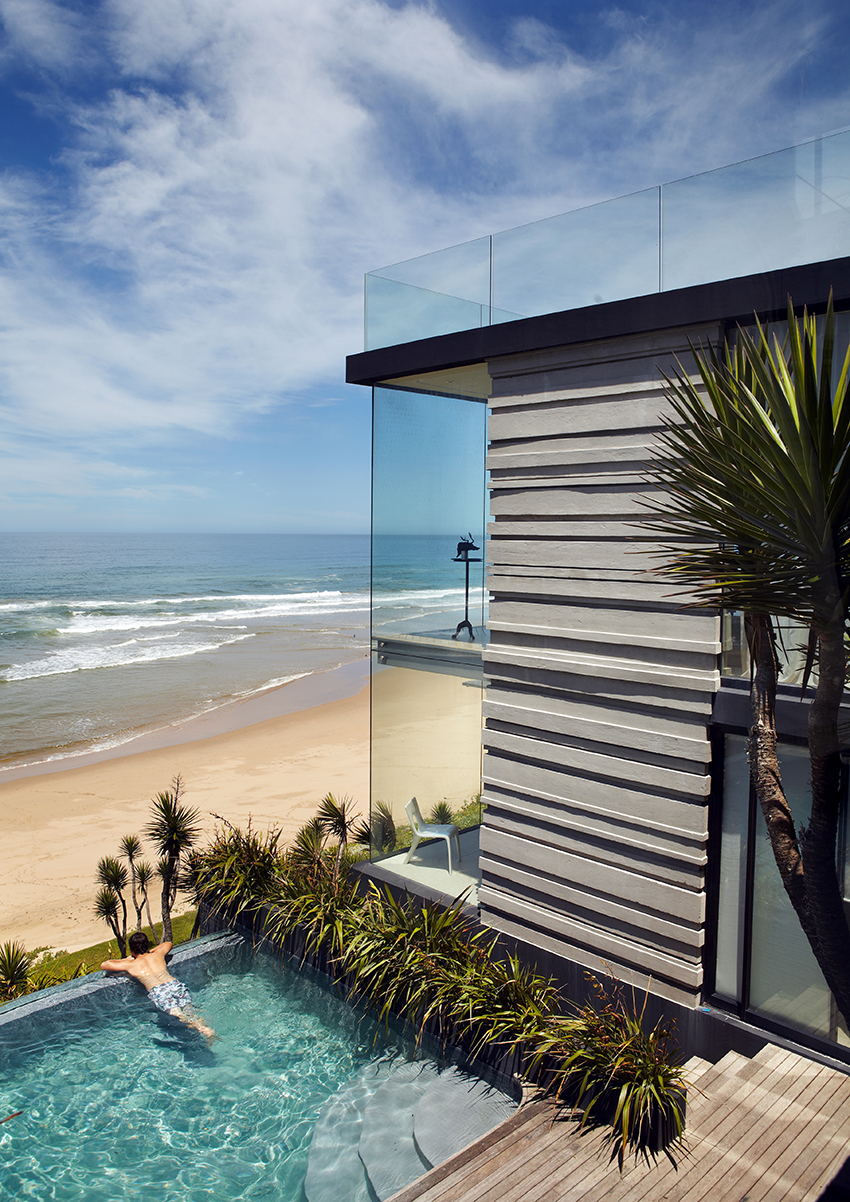
Now spanning four levels, the house is divided into a number of zones, where the family can relax, entertain, work, exercise or play – anchored by the central, open volume, communal family space. “The key to this home’s success is that it offers both communal and breakaway spaces,” says Trevyn. “There are various areas that allow people to divide off, but still feel connected. We’ve also created ‘islands’ where we can congregate – like the giant sofas in the main living room, where we all hang out and read together, and the dining room table, where we enjoy an early family dinner every evening. Julian is a fantastic cook and we really love our home. Our family time is very contained. We work exhaustively, in a very focused way, so when we’re not working we really just enjoy being at home together, without distraction.
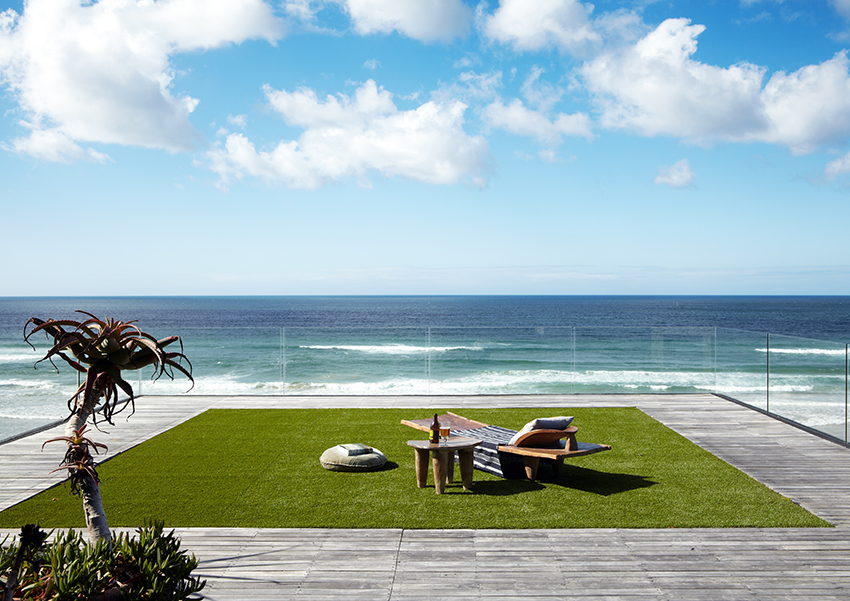
Home is an amazingly beautiful place.” Trevyn and Julian’s work life is fast-paced and pressurised. Operating in a highly competitive global arena, the couple are regarded as among the most influential forces behind the rise of contemporary Southern African design. The McGowan’s product development and distribution company, Source, is the primary agency for the international representation of South African design – most of South Africa’s design exports go through the Source offices, headed for leading retailers like The Conran Shop, Anthropologie, Jamie Oliver, ABC Carpet and Home, Bergdorf Goodman, West Elm, Restoration Hardware and many others.
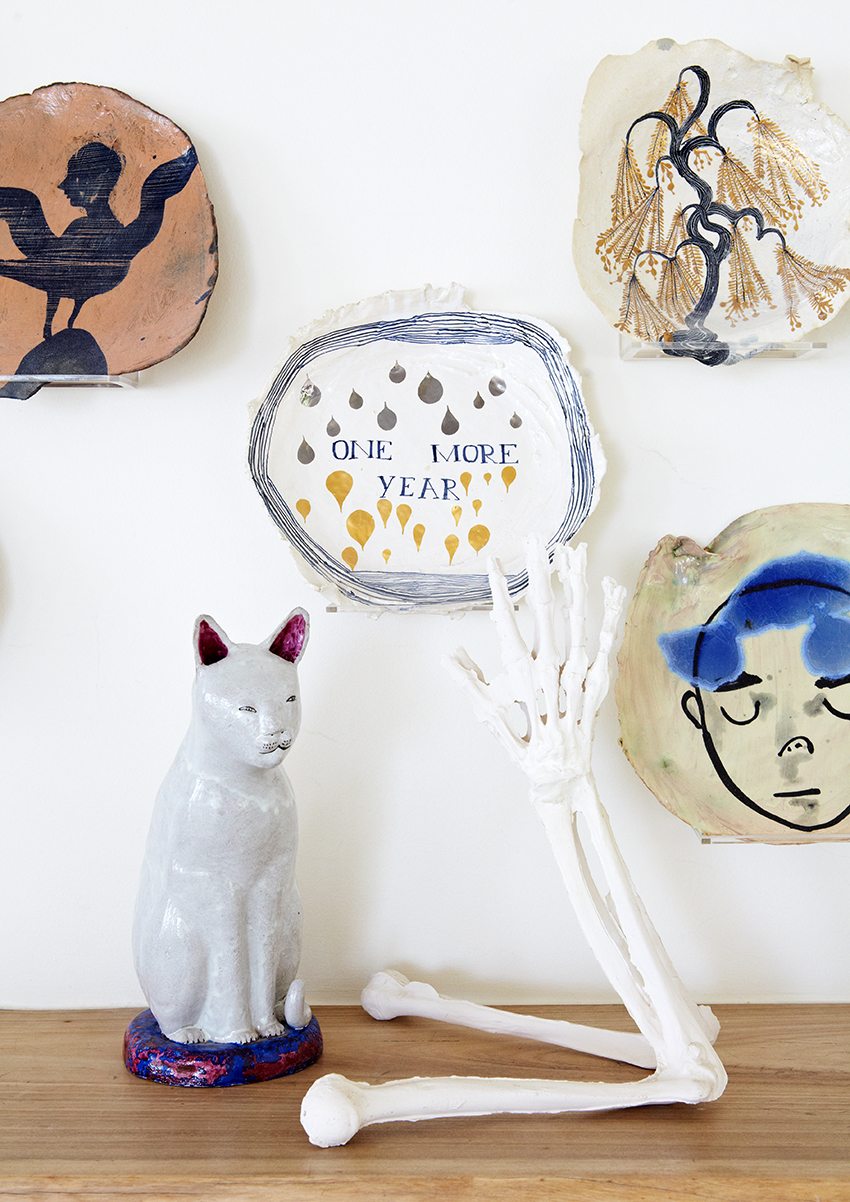
At the very top end of the market, they stage annual blockbuster exhibitions through their Southern Guild platform, showcasing collectible Southern African designart in South Africa, and alongside leading global galleries at international shows like Design Miami, Collective in New York, Design Days Dubai and the London Design Festival. Trevyn and Julian also run the Southern Guild Design Foundation – in partnership with ArcelorMittal South Africa – a non-profi t organisation they established in 2011 to support the development of designers in South Africa; and Trevyn is orchestrator of Design Network Africa (DNA), a Danish funded program aimed at developing designers throughout Africa. In addition, the couple are part of Cape Town’s World Design Capital 2014 curatorial team, serving on the International Advisory Board. Having spent almost half of 2013 travelling, they are hoping that 2014 will be less disruptive. “Cape Town’s World Design Capital 2014 designation presents a unique opportunity to bring the world to Cape Town,” Trevyn says. As part of Cape Town’s offi cial World Design Capital programme, the McGowans will present GUILD, Africa’s first international design fair, bringing together hand made, limited edition design from celebrated global galleries and institutions, in Cape Town in February.
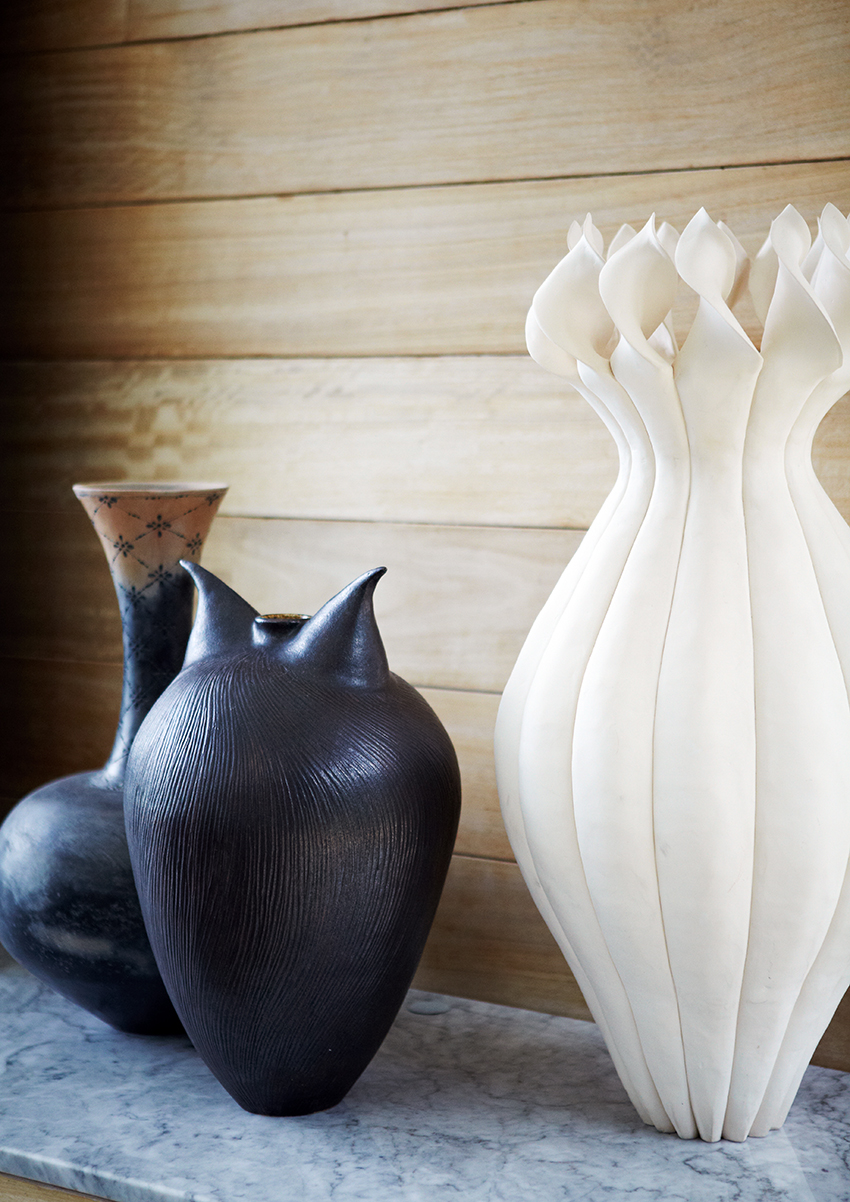
Trevyn says of her enduring working relationship with Julian: “We are very different, but we balance each other. Julian is an instinctive, big vision, creative person, with original ideas. I’m pragmatic and logistical – I run with ideas and make them happen. When we have opposing views, we’re very vocal. The one with the strongest viewpoint usually gets their way. I really value our working relationship and I don’t think one of us could have done this on our own. It helps that our work is a job and an obsession. It really matters to us, and we delight in making choices based on what we love – whether we’re buying a potato peeler or a painting. I suppose you could say that we enjoy messing around with the order of things,” says Trevyn of their approach to work. “We constantly ask ‘how do we make this better’, and it applies to everything. We love to be part of a process of keeping things moving – of making something what it wouldn’t have been without our interjection. It’s about shaping the way people see things, sometimes presenting them in a way that is digestible, but sometimes deliberately provoking new ways.”
Words: Lianne Burton
Photography: Greg Cox, Bureaux Productions
